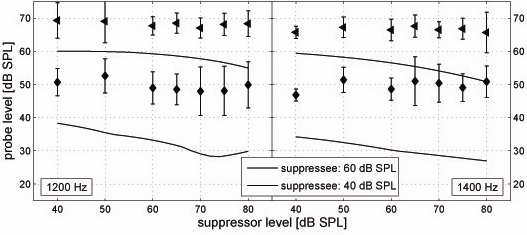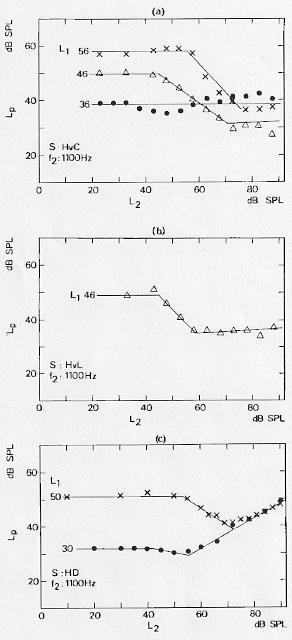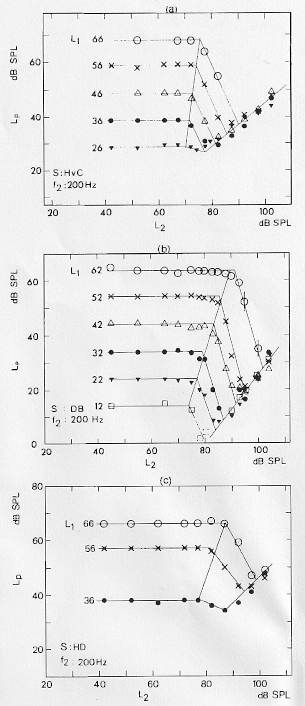Introduction
- investigation of principles and tendencies in two-tone suppression by the application of the method of pulsation threshold
- two-tone suppression is an interesting natural phenomenon of sound suppression (the sound is called the suppressed) and declines in its perception by the respondent in case the suppressor, or the second, accompanying sound is introduced
- depth of suppression and its behaviour is defined by variables discussed in the present work
- two-tone suppression can be witnessed only with respondents with normal hearing and can identify the hidden tendencies of the respondent response to the suppressor and suppressed of different levels and frequencies
- the initiators of research in the present field were Duifhuis and Houtgast who conducted the first influential, comprehensive experiments on defining two tone suppression under different preconditions
- testing their findings and going further on the research way by introducing additional suppressor and suppressed frequencies and levels to complement their results
Aim of the Study
- to investigate the frequencies of suppressor and suppressed already mentioned in the works of Hougast and Duifhuis and extend the scope of study to other frequencies and levels
Methods
- the study included 10 participants (students on a voluntary basis) with normal hearing indicators; the trial period was comparatively long to ensure credibility of results;
- experiments took place in a sound-proof booth, headphones, with calibration based on a B&K artificial ear type 4153, resulting in results being given in SPL-measures; additional equipment was the computer at which the respondent indicated presence or absence of response;
- the pulsation threshold method was preferred to forward masking due to a more defined and clear response to the suppressor under the conditions of masker absence;
- the procedure included seating the listener in the sound-proof booth and started the series of signals him-/herself; the experiment took place according to two models: (10 series of stimuli that were initiated by the listener and similar conditions, but frequency of the signal was chosen by the creators of the experiment).
Results



Discussion
- suppression decrease alongside with the suppressed level above 900 Hz
- experiment showed gradual steeping of the descending curve Sb under suppressor frequency >>suppressee frequency
- dependence of suppression on stimulus intensity is high
- at low frequencies the suppressed magnitude maxima were one or two within each period of the suppressor tone.
Conclusion
Two-tone suppression is the actual neural response arising in the basilar membrane, a part of the cochlear partition.
The two-tone suppression data assessed on the currently achieved results and the history of investigating two-tone suppression support the idea of Pashler and Yantis (2004) about the direct interrelation of the suppression level with the CF and the frequency of suppressor with the CF.
The most marked suppression is usually observed at low-frequency levels and becomes less clear and evident at high-frequency levels, i.e. the CF level.
Further research in this sphere and the ability to verify the results achieved in this work can be done with the application of the forward masking method as an alternative to achieve comprehensive, proven results first discussed by Yasin and Plack.